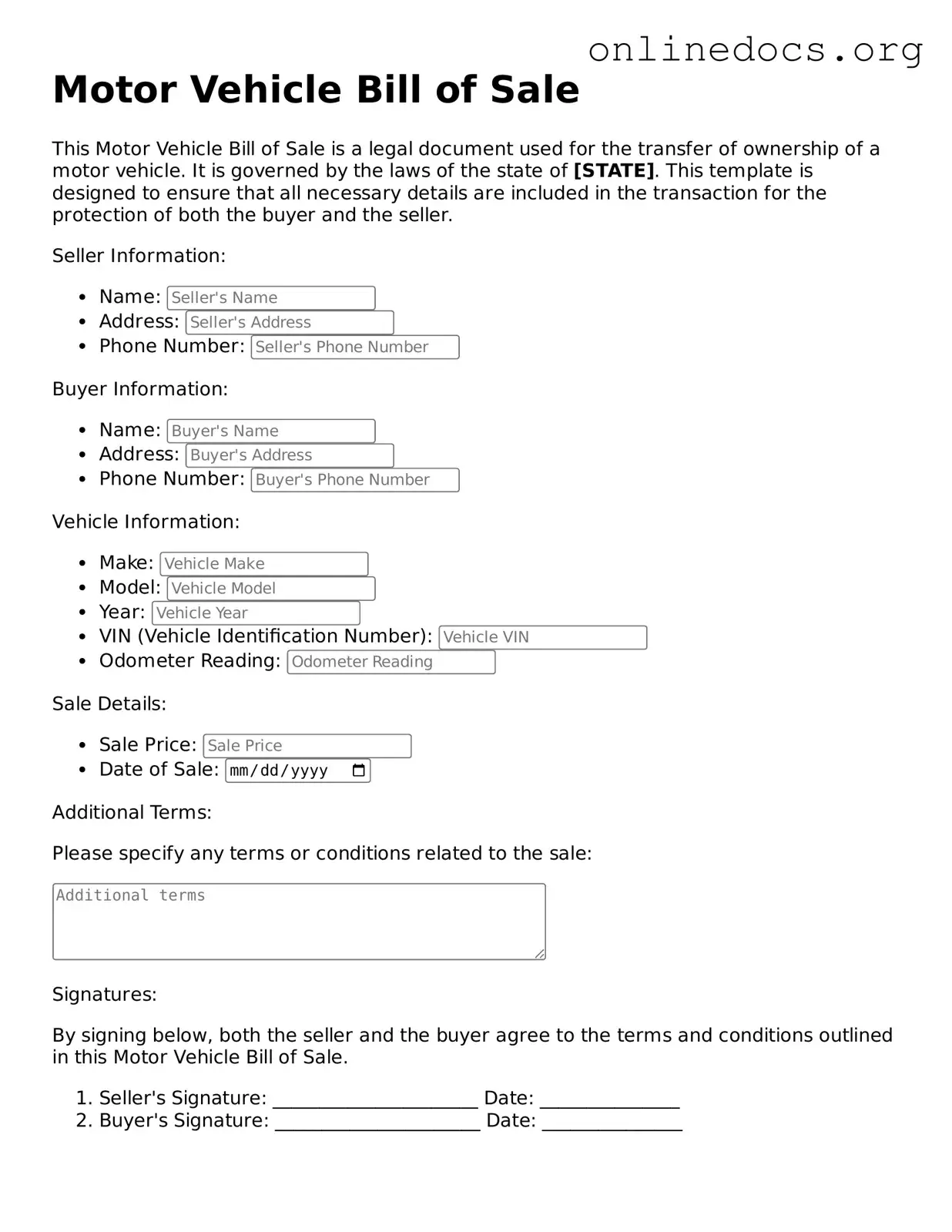The Motor Vehicle Bill of Sale form is similar to the Boat Bill of Sale. Both documents serve as proof of transfer of ownership for a vehicle or watercraft. They include essential details such as the buyer's and seller's information, a description of the item being sold, and the sale price. Just like the Motor Vehicle Bill of Sale, the Boat Bill of Sale may also include a statement of any warranties or conditions related to the sale.
The Texas Motor Vehicle Power of Attorney form is a crucial document that allows individuals to delegate authority for handling motor vehicle transactions to a trusted representative. This form is particularly useful for those who may not be available to manage titles, registrations, or other vehicle-related matters. To learn more about this important legal resource, consider reviewing the Motor Vehicle Power of Attorney form.
Another document that shares similarities is the Motorcycle Bill of Sale. This form is specifically tailored for the sale of motorcycles. It contains similar elements, such as the identification of the buyer and seller, details about the motorcycle, and the sale amount. Both documents serve to protect the interests of both parties and provide a legal record of the transaction.
The ATV Bill of Sale is yet another comparable document. Used for the sale of all-terrain vehicles, it follows the same format as the Motor Vehicle Bill of Sale. It includes necessary information about the buyer and seller, a description of the ATV, and the agreed-upon price. This document also helps in transferring ownership and may be required for registration purposes.
Similarly, the Trailer Bill of Sale is designed for the sale of trailers. It includes the same fundamental components, such as the names and addresses of the parties involved, a description of the trailer, and the sale price. This document is essential for establishing ownership and may be needed for titling and registration with state authorities.
The Equipment Bill of Sale is another document that resembles the Motor Vehicle Bill of Sale. This form is used for the sale of heavy machinery or equipment. It includes details about the equipment being sold, the buyer and seller's information, and the sale price. Both documents serve as legal proof of the transaction and can be used in case of disputes.
The Personal Property Bill of Sale is also similar in nature. It is a general document used for the sale of various types of personal property, including vehicles. This form captures the buyer's and seller's information, a description of the item, and the sale price. Like the Motor Vehicle Bill of Sale, it provides a record of ownership transfer and can be useful for legal purposes.
Lastly, the Real Estate Bill of Sale shares some characteristics with the Motor Vehicle Bill of Sale. While primarily used for real estate transactions, it can also include personal property sold along with the property. This document outlines the buyer and seller details, the property description, and the sale price. Both documents aim to formalize the sale and protect the interests of the parties involved.
